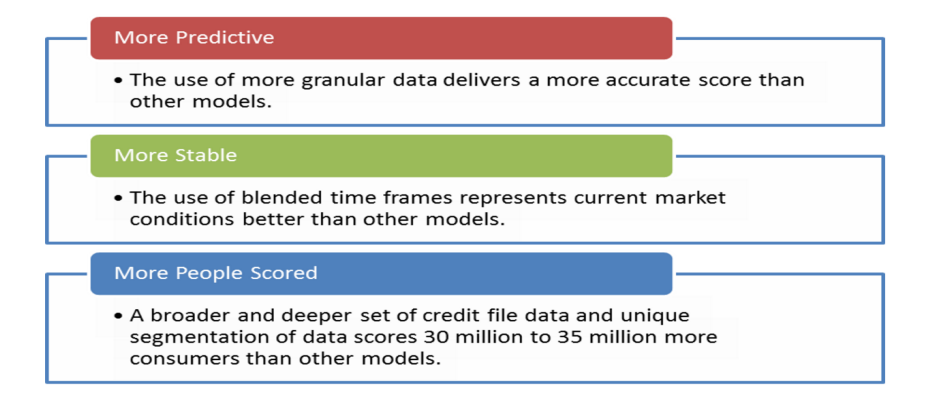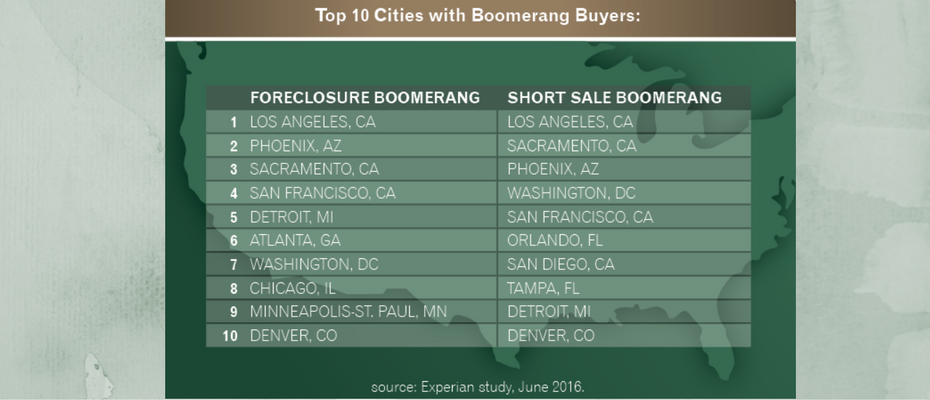Credit Lending

Reinventing Identity for the Digital Age Electronic Signature & Records Association (ESRA) conference I recently had the opportunity to speak at the Electronic Signature & Records Association (ESRA) conference in Washington D.C. I was part of a fantastic panel delving into the topic, ‘Reinventing Identity for the Digital Age.’ While certainly hard to do in just an hour, we gave it a go and the dialogue was engaging, healthy in debate, and a conversation that will continue on for years to come. The entirety of the discussion could be summarized as: An attempt to directionally define a digital identity today The future of ownership and potential monetization of trusted identities And the management of identities as they reside behind credentials or the foundations of block chain Again, big questions deserving of big answers. What I will suggest, however, is a definition of a digital identity to debate, embrace, or even deride. Digital identities, at a minimum, should now be considered as a triad of 1) verified personally identifiable information, 2) the collective set of devices through which that identity transacts, and 3) the transactional (monetary or non-monetary) history of that identity. Understanding all three components of an identity can allow institutions to engage with their customers with a more holistic view that will enable the establishment of omni-channel communications and accounts, trusted access credentials, and customer vs. account-level risk assessment and decisioning. In tandem with advances in credentialing and transactional authorization such as biometrics, block chain, and e-signatures, focus should also remain on what we at Experian consider the three pillars of identity relationship management: Identity proofing (verification that the person is who they claim to be at a specific point in time) Authentication (ongoing verification of a person’s identity) Identity management (ongoing monitoring of a person’s identity) As stronger credentialing facilitates more trust and open functionality in non-face-to-face transactions, more risk is inherently added to those credentials. Therefore, it becomes vital that a single snapshot approach to traditionally transaction-based authentication is replaced with a notion of identity relationship management that drives more contextual authentication. The context thus expands to triangulate previous identity proofing results, current transactional characteristics (risk and reward), and any updated risk attributes associated with the identity that can be gleaned. The bottom line is that identity risk changes over time. Some identities become more trustworthy … some become less so. Better credentials and more secure transactional rails improve our experiences as consumers and better protect our personal information. They cannot, however, replace the need to know what’s going on with the real person who owns those credentials or transacts on those rails. Consumers will continue to become more owners of their digital identity as they grant access to it across multiple applications. Institutions are already engaged in strategies to monetize trusted and shareable identities across markets. Realizing the dynamic nature of identity risk, and implementing methods to measure that risk over time, will better enable those two initiatives. Click here to read more about Identity Relationship Management.

How will the FinCEN revisions impact your business? (Part 1) Some recently published FinCEN revisions and advisories are causing a stir. First, let’s look at revisions to Customer Due Diligence that require compliance by May 2018. Under the updated requirements for Customer Due Diligence, covered financial institutions must expand programs, including Customer Identification Programs (CIP), to include Beneficial Owners of Legal Entity customers. Under the new rule, financial institutions must collect and verify identity information (name, address, date of birth, Social Security number or passport number for foreign individuals): For each Natural Person with at least 25% ownership in the Legal entity and For an individual with significant responsibility for managing or controlling the business — for example, a chief executive officer, a chief financial officer, a chief operating officer, a managing member, a general partner, a president, a vice president or a treasurer The U.S. Treasury estimates that illicit proceeds generated in the United States alone total $400 billion annually. These requirements are intended to prevent anonymous access to financial systems through shielded or minority ownership. While the effort to stem the tide of illicit proceeds is laudable, the impact to business may be significant. Most organizations will need to audit their data collection practices, and many will need to make changes to either data collection or workflow processes to ensure compliance. While quite simple and straightforward on paper, the standardization of additional CIP policies and procedures tend to create substantive impact to the customer experience as well as operational resource allocations and utilization. Covered financial institutions should already be discussing with their current or prospective fraud risk and identity management vendors to ensure that: There is a clear path to altering both data collection and verification of these additional identity elements. Clear and accurate benchmarking around expected verification rates is available ahead of the compliance date to allow for operational workflow design to accommodate both ‘verifications’ and ‘referrals stemming from lack of full verification.’ Service providers are granting access to best-in-class data assets and search & match logic related to identity element verification and risk assessment, along with multi-layered options to reconcile those initial verification ‘fails.’ Full business reviews and strategy design sessions are underway or being scheduled to align and document overall objectives of the program, benchmarking of leading industry practices, current and future state gaps, near- and long-term initiatives and a prioritized roadmap, a viable business case toward additional investment in services and resources, and a plan of execution. Will this impact your business? Will you need to make any changes? Click here to read part two - FinCEN and email-compromise fraud.

Lenders are looking for ways to accurately score more consumers and grow their applicant pool without increasing risk. And it looks like more and more are turning to the VantageScore® credit score to help achieve their goals. So, who’s using the VantageScore® credit score? 9 of the top 10 financial institutions. 18 of the top 25 credit card issuers. 21 of the top 25 credit unions. VantageScore leverages the collective experience of the industry’s leading experts on credit data, modeling and analytics to provide a more consistent and highly predictive credit score. >>Want to know more?

For members of the U.S. military, relocating often, returning home following a lengthy deployment and living with uncertainty isn’t easy. It can take an emotional and financial toll, and many are unprepared for their economic reality after they separate from the military. As we honor those who have served our country this Veterans Day, we are highlighting some of the special financial benefits and safeguards available to help veterans. Housing Help One of the best benefits offered to service members is the Veteran’s Administration (VA) home-loan program. Loan rates are competitive, and the VA guarantees up to 25 percent of the payment on the loan, making it one of the only ways available to buy a home with no down payment and no private mortgage insurance. Debt Relief Having a VA loan qualifies military members for a Military Debt Consolidation Loan (MDCL) that can help with overcoming financial difficulties. The MDCL is similar to a debt consolidation loan: take out one loan to pay off all unsecured debts, such as credit cards, medical bills and payday loans, and make a single payment to one lender. The advantage of a MDCL? Paying a lower interest rate and closing costs than civilians and far less interest than paying the same bills with credit cards. These refinancing loans can be spread out over 10, 15 and sometimes 30 years. Education Benefits The GI Bill is arguably the best benefit for veterans and members of the armed forces. It helps service members pay for higher education for themselves and their dependents, and is one of the top reasons people enlist. Eligible service members receive up to 36 months of education benefits, based on the type of training, length of service, college fund availability and whether he or she contributed to a buy-up program while on active duty. Benefits last up to 10 years, but the time limit may be extended. Saving & Investing Money According to the Department of Defense’s annual Demographics Report, 87 percent of military families contribute to a retirement account. Service members who participated in the Thrift Savings Plan, however, are often unaware of their options after they separate from service, and many don’t realize the advantages of rolling their plans into an IRA or retirement plan of a new employer. Safeguarding Identity Everyone is a potential identity theft target, but military personnel and veterans are particularly vulnerable. Routinely reviewing a credit report is one way to detect a breach. The Attorney General's Office provides general information about what steps to take to recover from identify theft or fraud. Today is a great time to consider ways to support your veteran and active military consumers. They are deserving of our support and recognition not just today but continuously. Learn more about services for veterans and active military to understand the varying protections, and how financial institutions can best support military credit consumers and their families.

A recent Experian analysis shows that about 2.5 million consumers will have a foreclosure, short sale or bankruptcy fall off their credit report between June 2016 and June 2017 — with 68% of these consumers scoring in the near-prime or high credit segments. Additional highlights include: Nearly 29% of those who short-sold between 2007 and 2010 have opened a new mortgage. Delinquencies for this group are below the national average for bankcard and auto loan payments. More than 12% of those who foreclosed now have boomeranged (opened new mortgages). With millions of borrowers potentially re-entering the housing market, the trends are promising for both the mortgage seeker and the lender. Want to know more?

U.S. Communities national contract awarded to Experian to use their data and analytic solutions in order to enable state and local government agencies to help consumers and better serve their communities for the future.

Much has been written about Millennials over the past few years, and many continue to speculate on how this now largest living generation will live, age and ultimately change the world. Will they still aspire to achieve the “American Dream” of education, home and raising a family? Do they wish for something different? Or has the “Dream” simply been delayed with so many individuals saddled with record-high student loan debt? According to a recent study by Pew, for the first time in more than 130 years, adults ages 18 to 34 were slightly more likely to be living in their parents’ home than they were to be living with a spouse or partner in their own household. It’s no secret the median age of first marriage has risen steadily for decades. In fact, a growing share of young adults may be eschewing marriage altogether. Layer on the story that about half of young college graduates between the ages of 22 and 27 are said to be “underemployed”—working in a job that hasn’t historically required a college degree – and it’s clear if nothing else that the “American Dream” for many Millennials has been delayed. So what does this all mean for the world of homeownership? While some experts warn the homeownership rate will continue to decrease, others – like Freddie Mac – believe that sentiment is overly pessimistic. Freddie Mac Chief Economist Sean Becketti says, “The income and education gaps that are responsible for some of the differences may be narrowed or eliminated as the U.S. becomes a 'majority minority' country.” Mortgage interest rates are still near historic lows, but home prices are rising far faster than incomes, negating much of the savings from these low rates. Experian has taken the question a step further, diving into not just “Do Millennials want to buy homes” but “Can Millennials buy homes?” Using mortgage readiness underwriting criteria, the bureau took a large consumer sample and assessed Millennial mortgage readiness. Experian then worked with Freddie Mac to identify where these “ready” individuals had the best chance of finding homes. The two factors that had the strongest correlation on homeownership were income and being married. From a credit perspective, 33 percent of the sample had strong or moderate credit, while 50 percent had weak credit. While the 50 percent figure is startling, it is important to note 40 percent of that grouping consisted of individuals aged 18 to 26. They simply haven’t had enough time to build up their credit. Second, of the weak group, 31 percent were “near-moderate,” meaning their VantageScore® credit score is 601 to 660, so they are close to reaching a “ready” status. Overall, student debt and home price had a negative correlation on homeownership. In regards to regions, Millennials are most likely to live in places where they can make money, so urban hubs like Los Angeles, San Francisco, Chicago, Dallas, Houston, Boston, New York and DC currently serve as basecamp for this group. Still, when you factor in affordability, findings revealed the Greater New York, Houston and Miami areas would be good areas for sourcing Millennials who are mortgage ready and matching them to affordable inventory. Complete research findings can be accessed in the Experian-Freddie Mac co-hosted webinar, but overall signs indicate Millennials are increasingly becoming “mortgage ready” as they age, and will soon want to own their slice of the “American Dream.” Expect the Millennial homeownership rate of 34 percent to creep higher in the years to come. Brokers, lenders and realtors get ready.

In this age of content and increasing financial education available to all, most entities are familiar with credit bureaus, including Experian. They are known for housing enormous amounts of data, delivering credit scores and helping businesses decision on credit. On the consumer side, there are certainly myths about credit scores and the credit report. But myths exist among businesses as well, especially as it pertains to the topic of reporting credit data. How does it work? Who’s responsible? Does reporting matter if you’re a small lender? Let’s tackle three of the most common myths surrounding credit reporting and shine a light on how it really is essential in creating a healthy credit ecosystem. Myth No. 1: Reporting to one bureau is good enough. Well, reporting to one bureau is definitely better than reporting to none, but without reporting to all three bureaus, there could be gaps in a consumer’s profile. Why? When a lender pulls a consumer’s profile to evaluate it for extending additional credit, they ideally would like to see a borrower’s complete credit history. So, if one of their existing trades is not being reported to one bureau, and the lender makes a credit pull from a different bureau to use for evaluation purposes, no knowledge of that trade exists. In cases like these, credit grantors may offer credit to your customer, not knowing the customer already has an obligation to you. This may result in your customer getting over-extended and negatively impacting their ability to pay you. On the other side, in the cases of a thin-file consumer, not having that comprehensive snapshot of all trades could mean they continue to look “thin” to other lenders. The best thing you can do for a consumer is report to all three bureaus, making their profile as robust as it can be, so lenders have the insights they need to make informed credit offers and decisions. Some believe the bureaus are regional, meaning each covers a certain part of the country, but this is false. Each of the bureaus are national and lenders can report to any and all. Myth No. 2: Reporting credit data is hard. Yes, accurate and timely data reporting requires a few steps, but after you get familiar with Metro 2, the industry standard format for consumer data reporting, choose a strategy, and register for e-Oscar, the process is set. The key is to do some testing, and also ensure the data you pass is accurate. Myth No. 3: Reporting credit data is a responsibility for the big institutions –not smaller lenders and companies. For all lenders, credit bureau data is vitally important in making informed risk determinations for consumer and small business loans. Large financial institutions have been contributing to the ecosystem forever. Many smaller regional banks and credit unions have reported consistently as well. But just think how much stronger the consumer credit profile would be if all lenders, utility companies and telecom businesses reported? Then you would get a true, complete view into the credit universe, and consumers benefit by having the most comprehensive profile --- Bottom line is that when comprehensive data on consumer credit histories is readily available, it’s a good thing for consumers and lenders. And the truth is all businesses - big and small - can make this a reality.

Historically, the introduction of EMV chip technology has resulted in a significant drop in card-present fraud, but a spike in card-not-present (CNP) fraud. CNP fraud accounts for 60% to 70% of all card fraud in many countries and is increasing. Merchants and card issuers in the United States likely will see a rise in CNP fraud as EMV migration occurs — although it may be more gradual as issuers and merchants upgrade to chip-based cards. As fraud continues to evolve, so too should your fraud-prevention strategies. Make a commitment to stay abreast of the latest fraud trends and implement sophisticated, cross-channel fraud-prevention strategies. >>Protecting Growth Ambitions Against Rising Fraud Threats

Prescriptive solutions: Get the Rx for your right course of action By now, everyone is familiar with the phrase “big data” and what it means. As more and more data is generated, businesses need solutions to help analyze data, determine what it means and then assist in decisioning. In the past, solutions were limited to simply describing data by creating attributes for use in decisioning. Building on that, predictive analytics experts developed models to predict behavior, whether that was a risk model for repayment, a propensity model for opening a new account or a model for other purposes. The next evolution is prescriptive solutions, which go beyond describing or predicting behaviors. Prescriptive solutions can synthesize big data, analytics, business rules and strategies into an environment that provides businesses with an optimized workflow of suggested options to reach a final decision. Be prepared — developing prescriptive solutions is not simple. In order to fully harness the value of a prescriptive solution, you must include a series of minimum capabilities: Flexibility — The solution must provide users the ability to make quick changes to strategies to adjust to market forces, allowing an organization to pivot at will to grow the business. A system that lacks agility (for instance, one that relies heavily on IT resources) will not be able to realize the full value, as its recommendations will fall behind current market needs. Expertise — Deep knowledge and a detailed understanding of complex business objectives are necessary to link overall business goals to tactical strategies and decisions made about customers. Analytics — Both descriptive and predictive analytics will play a role here. For instance, the use of a layered score approach in decisioning — what we call dimensional decisioning — can provide significant insight into a target market or customer segment. Data — It is assumed that most businesses have more data than they know what to do with. While largely true, many organizations do not have the ability to access and manage that data for use in decision-making. Data quality is only important if you can actually make full use of it. Let’s elaborate on this last point. Although not intuitive, the data you use in the decision-making process should be the limiting factor for your decisions. By that, I mean that if you get the systems, analytics and strategy components of the equation right, your limitation in making decisions should be data-driven, and not a result of another part of the decision process. If your prescriptive environment is limited by gaps in flexibility, expertise or analytic capabilities, you are not going to be able to extract maximum value from your data. With greater ability to leverage your data — what I call “prescriptive capacity” — you will have the ability to take full advantage of the data you do have. Taking big data from its source through to the execution of a decision is where prescriptive solutions are most valuable. Ultimately, for a business to lead the market and gain a competitive advantage over its competitors — those that have not been able to translate data into meaningful decisions for their business — it takes a combination of the right capabilities and a deep understanding of how to optimize the ecosystem of big data, analytics, business rules and strategies to achieve success.

Experian conducted a joint-survey that uncovered insights into the topic of conversational commerce and voice assistants. The survey audience constituted nearly 1300 smartphone users of smart voice assistant tools. The survey asked about most requested tasks and general consumer satisfaction with the voice-recognition capabilities of Amazon's Alexa relative to other smart voice assistants such as Siri and Google.

The first six months of 2016 has shown that the total credit card limits among the subprime and deep subprime credit range totaled $6.4 billion, the highest amount reported for those groups in the last five years. Our Q2 2016 Experian-Oliver Wyman Market Intelligence Report webinar will analyze the trends impacting consumer credit decisions in the current economy. The data is from the latest Experian Market Intelligence Brief report.

Consumers want to pay less. This is true in retail and in lending. No big surprise, right? So in order for lenders to capitalize and identify the right consumers for their respective portfolios, they need insights. Lenders want to better understand what rates consumers have. They want to know how much interest their customers pay. They want to know if consumers within their portfolio are at risk of leaving, and they want visibility into new prospects they can market to in an effort to grow. Luckily, lenders can look to trade level fields to be in the know. These inferred data fields, powered by Trended Data, allow lenders to offer products and terms that serve two purposes: First, their use in response models and offer alignment strategies drive better performance, ROI and life-time value. As noted earlier, consumers want to pay less, so if they are offered a better rate or money-saving offer, they’re more likely to respond. Second, they ultimately save consumers money in a way that benefits each consumer’s unique financial situation- overall savings on interest paid over the life of the loan, or consolidation of other debt often combined for a lower monthly payment. These trade level fields allow lenders to dig into various trends and insights surrounding consumers. For example, Experian data can identify big spenders and transactors (those who pay off their purchases every month). Research reveals these individuals love to be rewarded for how they use credit, demanding rewards, airline miles or other goodies for the spending they do. They also really like to be rewarded with higher credit lines, whether they use the increased line or not. Fail to serve these transactors in the right way and lenders could be faced with lackluster performance in the form poor response rates, booking rates, activation rates and early attrition. Thus, a little trade level insight can go a long way in helping lenders personalize products, offers and anticipate future financial needs. Knowing the profitability of a customer across all of their accounts is important, and accessing this intelligence in a seamless way is ideal. The data exists. For lenders, it’s just a matter of unlocking it, making those small, but meaningful changes and keeping a pulse on the portfolio. Together, these strategies can help lenders keep their best customers and acquire new ones that stick around longer.

Consumer card balance transfer activity is estimated to be $35 billion to $40 billion a year. How do lenders identify these consumers before they make transfers? By using trended data. While extremely valuable, trended data is very complex and difficult to work with. For example, with 24 months of history on five fields, a single account includes 120 data points. That’s 720 data points for a consumer with six accounts on file and 72 million for a file with 100,000 consumers — not to mention the other data fields in the file. Trended data allows lenders to effectively predict where a consumer is going based on where they’ve been. And that can make all the difference when it comes to smart lending decisions. >>What is trended data?

As regulators continue to warn financial institutions of the looming risk posed by HELOCs reaching end of draw, many bankers are asking: Why should I be concerned? What are some proactive steps I can take now to reduce my risk? This blog addresses these questions and provides clear strategies that will keep your bank on track. Why should I be concerned? Just a quick refresher: HELOCs provide borrowers with access to untapped equity in their residences. The home is taken as collateral and these loans typically have a draw period from five to 10 years. At the end of the draw period, the loan becomes amortized and monthly payments could increase by hundreds of dollars. This payment increase could be debilitating for borrowers already facing financial hardships. The cascading affect on consumer liquidity could also impact both credit card and car loan portfolios as borrowers begin choosing what debt they will pay first. The breadth of the HELOC risk is outlined in an excerpt from a recent Experian white paper. The chart below illustrates the large volume of outstanding loans that were originated from 2005 to 2008. The majority of the loans that originated prior to 2005 are in the repayment phase (as can be seen with the lower amount of dollars outstanding). HELOCs that originated from 2005 to 2008 constitute $236 billion outstanding. This group of loans is nearing the repayment phase, and this analysis examines what will happen to these loans as they enter repayment, and what will happen to consumers’ other loans. What can you do now? The first step is to perform a portfolio review to assess the extent of your exposure. This process is a triage of sorts that will allow you to first address borrowers with higher risk profiles. This process is outlined below in this excerpt from Experian’s HELOC white paper. By segmenting the population, lenders can also identify consumers who may no longer be credit qualified. In turn, they can work to mitigate payment shock and identify opportunities to retain those with the best credit quality. For consumers with good credit but insufficient equity (blue box), lenders can work with the borrowers to extend the terms or provide payment flexibility. For consumers with good credit but sufficient equity (purple box), lenders can work with the borrowers to refinance into a new loan, providing more competitive pricing and a higher level of customer service. For consumers with good credit but insufficient equity (teal box), a loan modification and credit education program might help these borrowers realize any upcoming payment shock while minimizing credit losses. The next step is to determine how you move forward with different customers segments. Here are a couple of options: Loan Modification: This can help borrowers potentially reduce their monthly payments. Workouts and modification arrangements should be consistent with the nature of the borrower’s specific hardship and have sustainable payment requirements. Credit Education: Consumers who can improve their credit profiles have more options for refinancing and general loan approval. This equates to a win-win for both the borrower and lender. HELOCs do not have to pose a significant risk to financial institutions. By being proactive, understanding your portfolio exposure and helping borrowers adjust to payment changes, banks can continue to improve the health of their loan portfolios. Ancin Cooley is principal with Synergy Bank Consulting, a national credit risk management and strategic planning firm. Synergy provides a rangeof risk management services to financial institutions, which include loan reviews, IT audits, internal audits, and regulatory compliance reviews. As principal, Ancin manages a growing portfolio of clients throughout the United States.